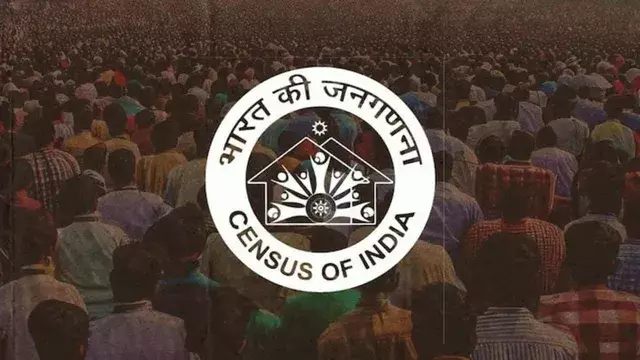- Courses
- GS Full Course 1 Year
- GS Full Course 2 Year
- GS Full Course 3 Year
- GS Full Course Till Selection
- Answer Alpha: Mains 2025 Mentorship
- MEP (Mains Enrichment Programme) Data, Facts
- Essay Target – 150+ Marks
- Online Program
- GS Recorded Course
- Polity
- Geography
- Economy
- Ancient, Medieval and Art & Culture AMAC
- Modern India, Post Independence & World History
- Environment
- Governance
- Science & Technology
- International Relations and Internal Security
- Disaster Management
- Ethics
- NCERT Current Affairs
- Indian Society and Social Issue
- NCERT- Science and Technology
- NCERT - Geography
- NCERT - Ancient History
- NCERT- World History
- NCERT Modern History
- CSAT
- 5 LAYERED ARJUNA Mentorship
- Public Administration Optional
- ABOUT US
- OUR TOPPERS
- TEST SERIES
- FREE STUDY MATERIAL
- VIDEOS
- CONTACT US
India’s Digital Divide: Access vs Ability
India’s Digital Divide: Access vs Ability

Why in the News?
- The first Comprehensive Annual Modular Survey (CAMS) conducted by NSSO (National Sample Survey Office) between July 2022–June 2023.
- It reveals data on digital access across Indian households.
- It assesses how access to Internet and digital skills vary across social groups, income deciles, and rural-urban areas.
- The survey covered 3.02 lakh households and 12.99 lakh individuals across India.
Key Highlights of the Survey:
- Broadband Access Across India
- At the national level, 76.3% of households have broadband internet. However, this access is uneven:
- In urban areas, 86.5% of households are connected.
- In rural areas, the figure drops to 71.2%.
- At the national level, 76.3% of households have broadband internet. However, this access is uneven:
- Regional Disparities:
- Some states have very high broadband penetration, with over 90% of households connected.
- These include Delhi, Goa, Mizoram, Manipur, Haryana, Sikkim, and Himachal Pradesh.
- On the other hand, some states have less than 70% of households with broadband access.
- These include West Bengal, Andhra Pradesh, Odisha, and Arunachal Pradesh.
- Caste-wise Differences
- Broadband connectivity also varies across caste categories:
- General category households: 84.1%
- Other Backward Classes (OBCs): 77.5%
- Scheduled Castes (SCs): 69.1%
- Scheduled Tribes (STs): 64.8%
- Broadband connectivity also varies across caste categories:
- Income and Broadband Access
- Monthly per capita consumption expenditure (MPCE) is used as a proxy for income as income data at household level is not available.
- The population is arranged from the bottom 10% to the top 10% in terms of MPCE.
- Among the bottom 10% households (poorest), only 28.4% have broadband access.
- Among the top 10%, broadband access is 98.1%.
- Even in the second lowest decile, only 56.2% of households are connected.
- This shows a strong correlation between economic status and digital access.
- Mobile and Telephone Ownership
- Mobile or telephone ownership is high across the country
- 94.2% of rural households own a mobile or telephone
- 97.1% of urban households own a mobile or telephone.
- Among individuals aged 15 and above:
- 83.9% in rural areas can use mobile phones.
- 92.4% in urban areas can use mobile phones.
- Mobile or telephone ownership is high across the country
- Gender and Social Disparities:
- Despite high mobile ownership, actual usage reveals deeper inequalities:
- Among rural women from the general category, only 25.3% use mobile phones exclusively.
- In urban areas, the number increases to 51.2%.
- For SCs, STs, and OBCs, both male and female usage rates are significantly lower than the general category.
- Despite high mobile ownership, actual usage reveals deeper inequalities:
- Status of 4G and 5G usage:
- Rural Areas: More than half the population uses 4G.
- Urban Areas: More than 70% use 4G.
- 40.4% of the population still relies on older technologies like 2G or 3G.
- 5G adoption is currently negligible.
- Digital skills Assessment:
- The survey assessed digital abilities using tasks like internet usage, emailing, copy-paste, spreadsheet operations, and online banking:
- Internet usage (15+ years age): 53.6% in rural areas, 74% in urban areas.
- Sending/receiving emails: 20% in rural areas, 40% in urban areas.
- Copy-paste function: 40% in rural areas, 60% in urban areas.
- Spreadsheet arithmetic operations: Extremely low nationwide.
- Online banking: Only 37.8% of the total population aged 15+ can perform these tasks.
- This reveals that basic digital literacy remains limited, especially in rural and economically weaker sections.
- The survey assessed digital abilities using tasks like internet usage, emailing, copy-paste, spreadsheet operations, and online banking:
|
Monthly Per Capita Consumption Expenditure (MPCE):
|
Implications for India
- The Digital Divide is Stark:
- Access to the internet and digital skills are still concentrated among the rich, urban, and upper social groups
- This leaves behind the poor, rural, and marginalized communities.
- Threat to Educational Goals:
- India’s commitment to Sustainable Development Goal (SDG) 4, which aims at inclusive and equitable quality education, is challenged by these digital disparities.
- Specifically, SDG targets 4.4.1 and 4.4.2 relate to digital and ICT skills, which are clearly lagging.
- Limited Employability:
- Without basic digital skills like email use or online banking, large sections of the population face barriers to employment in a digital economy.
- Inequity in Access to Government Services:
- Many government services are now digital-first, and this digital divide creates exclusion for those without access.
- Gender Inequality:
- The gender gap in mobile and internet usage is a major concern, especially for women in rural and marginalized communities.
- Slow 5G Adoption:
- Despite policy-level enthusiasm, actual ground-level usage of 5G is almost non-existent.
- This means India is still catching up with 4G, let alone advancing to next-gen tech.
Digital Divide in India:
|
Challenges and Way Forward
|
Challenges |
Way Forward |
|
1. Low broadband access among the poorest households |
Government should subsidize broadband for low-income households. |
|
2. Gender gap in mobile/internet use |
Promote digital literacy campaigns targeted at rural women and girls. |
|
3. Lack of digital skills in rural areas |
Integrate basic ICT training in schools and adult literacy programs. |
|
4. Caste and social inequality in digital access |
Design inclusive schemes with special focus on SC, ST, and OBC communities. |
|
5. Outdated mobile technology still in use |
Encourage affordable smartphone schemes with 4G/5G capability. |
|
6. Uneven regional infrastructure |
Invest in rural digital infrastructure, especially in low-performing states |
|
Ensure IAS Mains Question Q. Despite the growing penetration of digital infrastructure in India, significant disparities persist in internet access and digital skills across regions, genders, and income groups. Discuss the implications of the digital divide and suggest measures to bridge it. (250 words) |
|
Ensure IAS Prelims Question Q. Consider the following statements about digital skills in India:
Which of the statements given above is/are correct?
Answer: b Explanation: Statement 1 is incorrect: According to the CAMS (Comprehensive Annual Modular Survey), only around 40% of rural Indians aged 15 years and above are able to perform the copy-paste function in digital documents. Statement 2 is correct: The survey reveals that only 37.8% of India’s population aged 15 and above can carry out online banking transactions, indicating that digital financial skills are still not widespread. Statement 3 is incorrect: While mobile phone ownership appears high at the household level, mobile phone usage is not uniform across caste and gender. The survey highlights that women, especially in rural areas and from SC/ST/OBC communities, have significantly lower access and usage rates compared to men and those from the general category. For example, only 25.3% of rural women in the general category use mobile phones exclusively. |




